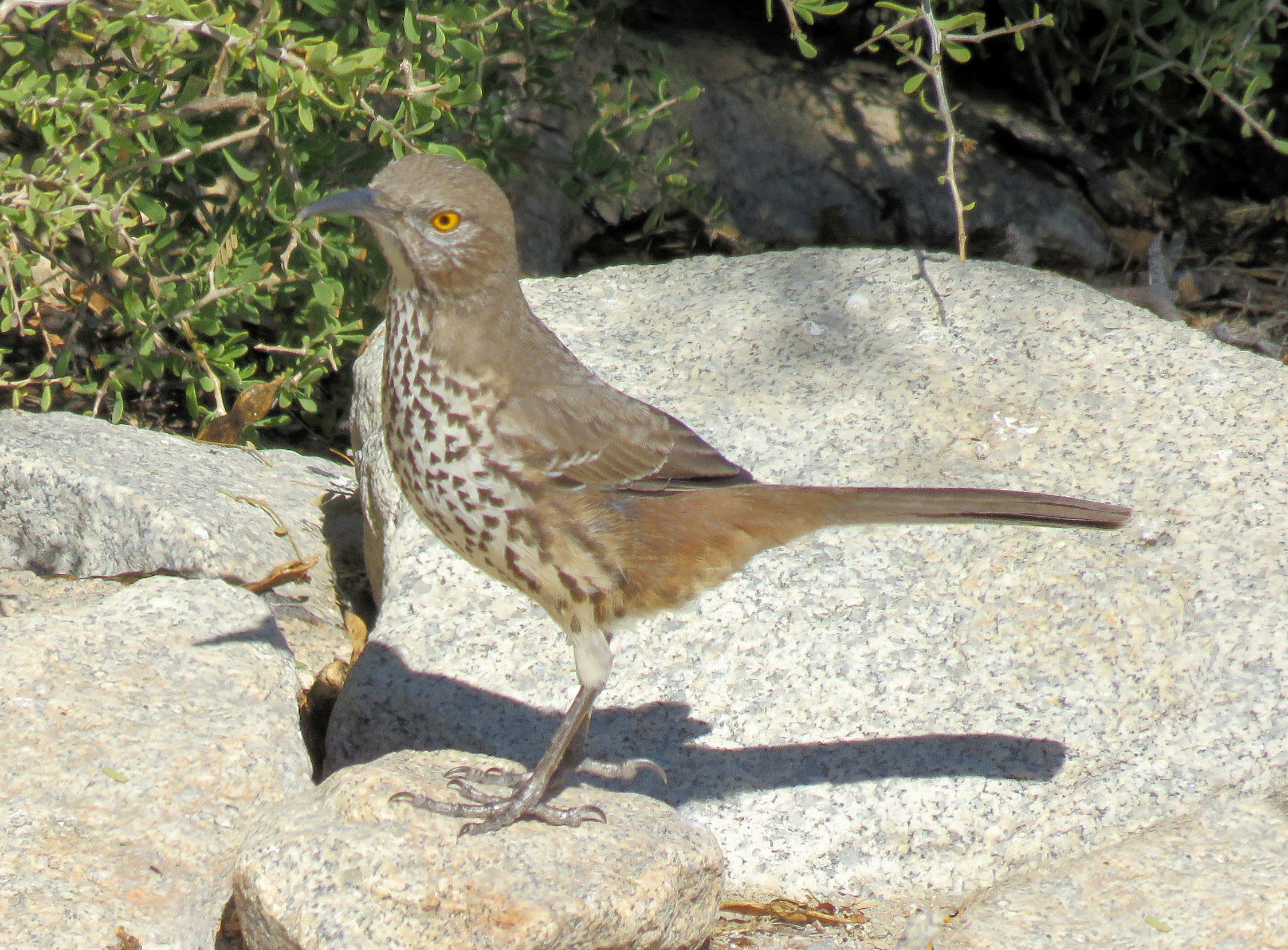Gray Thrasher, Toxostoma cinereum
 Gray Thrasher, Toxostoma cinereum cinereum. Bird photographed in the greater Los Cabos area of Baja California Sur, December 2019. Photograph courtesy of Dr. Tom Bartol, Carlsbad, California.
Gray Thrasher, Toxostoma cinereum cinereum. Bird photographed in the greater Los Cabos area of Baja California Sur, December 2019. Photograph courtesy of Dr. Tom Bartol, Carlsbad, California.

 Gray Thrasher, Toxostoma cinereum mearnsi. Photographs taken in the coastal bush of the greater Bahía de los Ángeles area, Baja California, November 2008. Photographs courtesy of George Flicker, Bahía de los Ángeles. Identification courtesy of Mary & George Flicker, Bahía de los Ángeles.
Gray Thrasher, Toxostoma cinereum mearnsi. Photographs taken in the coastal bush of the greater Bahía de los Ángeles area, Baja California, November 2008. Photographs courtesy of George Flicker, Bahía de los Ángeles. Identification courtesy of Mary & George Flicker, Bahía de los Ángeles.
Background and Identification
The Gray Thrasher, Toxostoma cinereum cinereum and Toxostoma cinereum mearnsi, are the two subspecies of Gray Thrasher, both found in Mexico. They are a member of the Mimidae Family of Mockingbirds and Thrashers, which has thirty-four members place in ten genera, and is one of ten global species of the Toxostoma Genus. They are also known as the Baja California Thrasher and in Mexico as cuicacoche bajacaliforniano and cuitlacoche peninsula.
The Gray Thrasher is small to mid-sized in stature. The males and female are similar in appearance with consistent year-round plumage, with the sexes being similar in appearance. They have plain plumage with brownish gray to brown upperparts with a cinnamon brown rump and uppertail coverts. Their underparts are whitish and densely marked with elongated black spots. Their bill is gray, their eyes are bright golden yellow, and their legs are gray. Their tail is long and graduated. Their bill is long, slender, slightly decurved and grayish, their iris is golden yellow, and their legs and toes are grayish.
Habitat and Geographical Range
The Gray Thrasher are found in arid lowland scrub in arid to semiarid open to semi-open habitate with cacti, scrub, scattered bushes, trees, and grassy areas at elevations up to 1,500 m (4,920 feet). They feed on the ground consuming arthropods, cactus fruits and other fruits. They build nests from twigs placed low above the ground in a cactus and thorny scrub. The Gray Thresher is poorly studied and very little about their biology and behavior patterns has been documented.
Common Misidentifications
Within its restricted geographic range the Gray Thrasher is unlikely to be confused with any other species. The Cactus Wren, Campylorhynchus brunneicapillus, is much smaller with a much shorter, straighter bill with a whitish supercilium. The Sage Thrasher, Oreosoptes montanus, is smaller with a much shorter, straighter bill and shorter tail.
The Gray Thrasher is ENDEMIC to Mexico and is a year-round resident of the Baja California Peninsula. The cinereum subspecies is found in central and southern Baja California Sur. The mearnsi subspecies is found in central and northwest Baja California.
Conservation Status
From a conservation perspective the Gray Thrasher is currently considered to be of Least Concern, however, their populations have not been studied and trends are unknown.